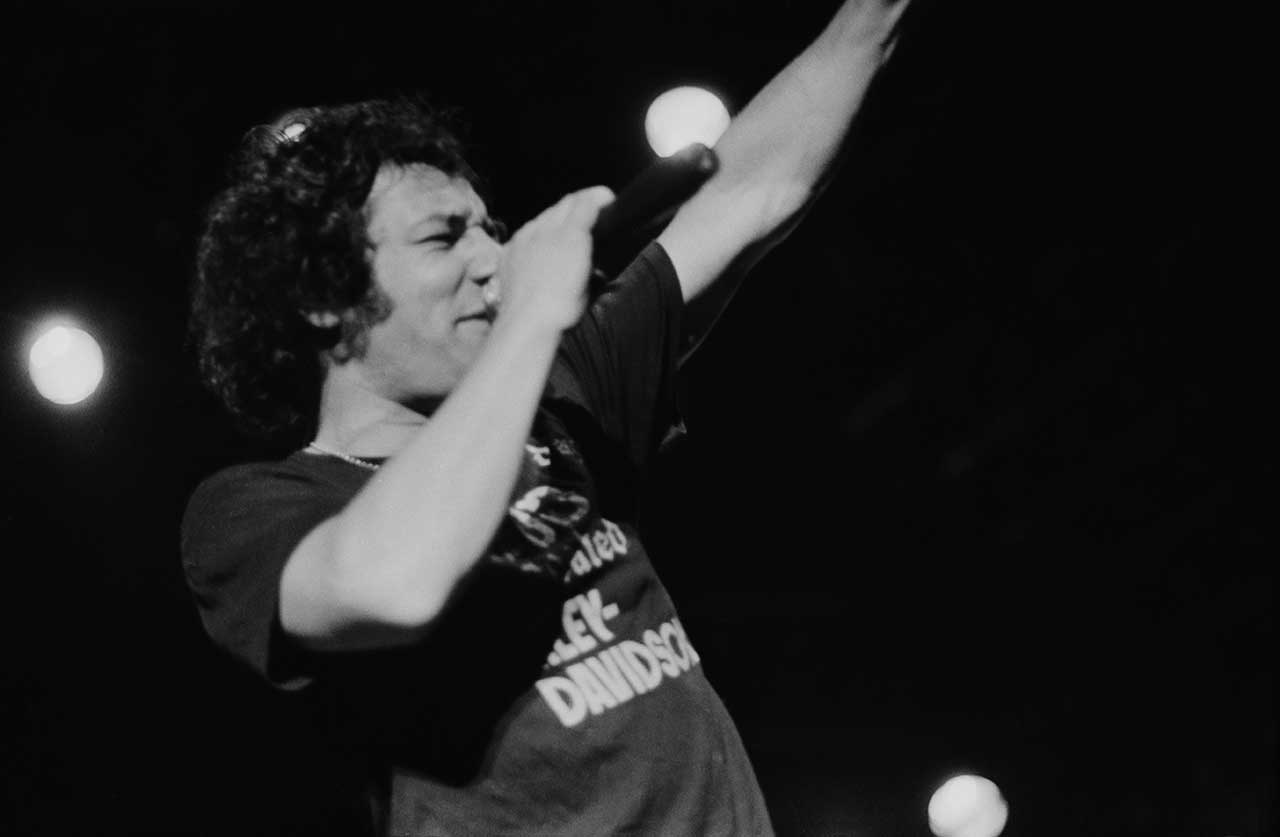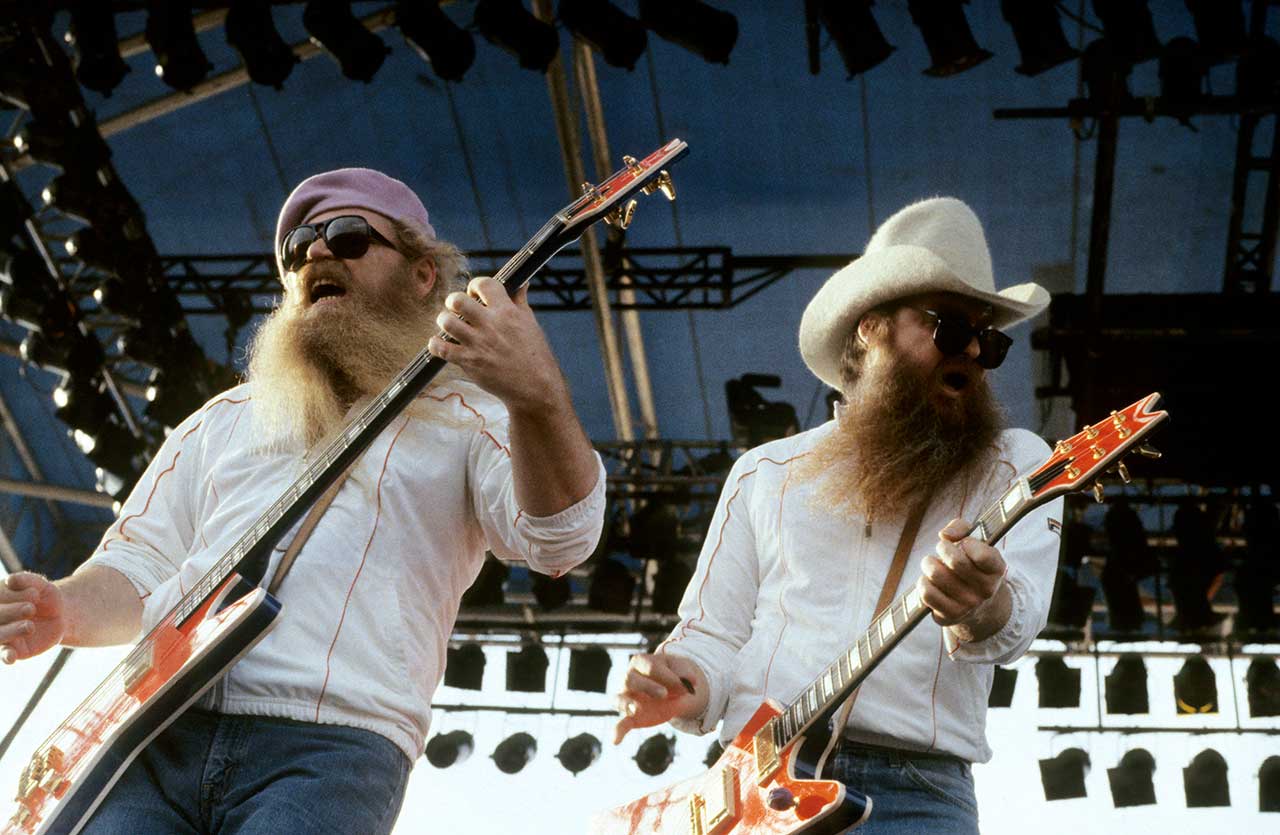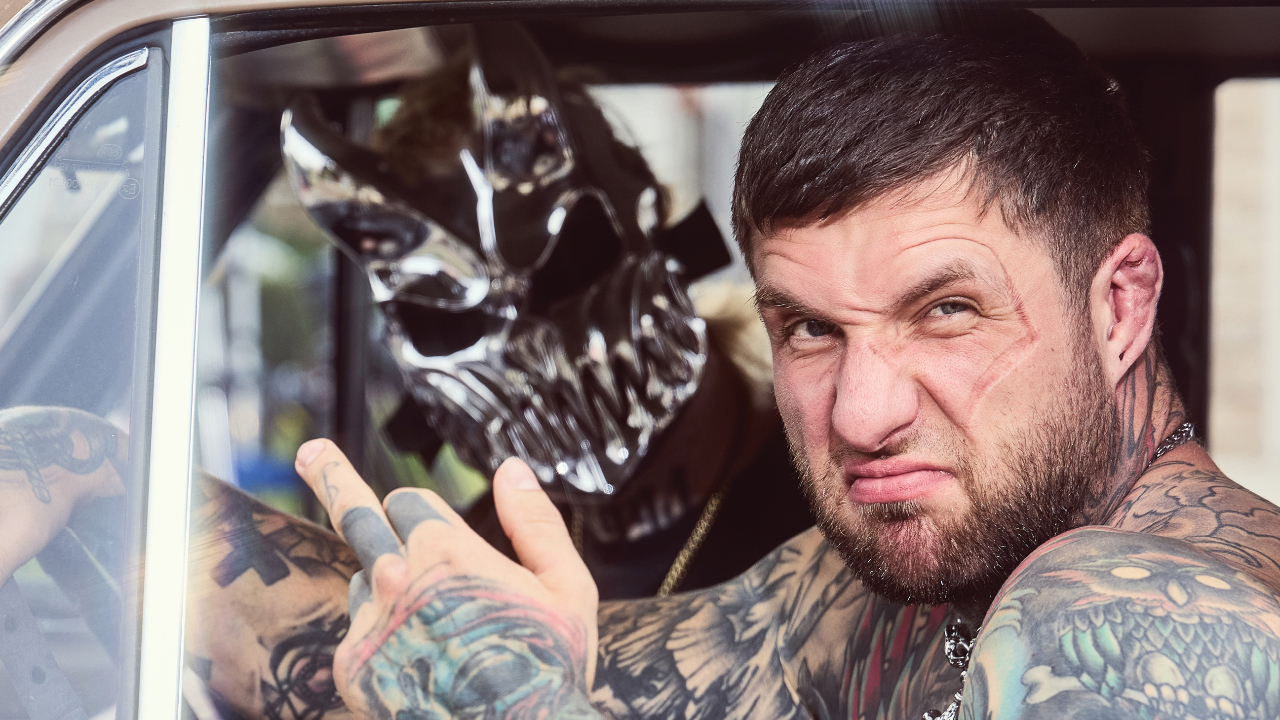Mud. Bloody mud everywhere. That’s the abiding memory of the first ever Monsters Of Rock festival in 1980. In fact, this would become one of the myths about the festival.
“Everybody thinks it’s always wet at Donington,” promoter Maurice Jones would say several years after the inaugural event. “But that’s not true. I can show you the weather details for every year, and more often than not it’s sunny!”
But on August 16, the date of that debut festival at Castle Donington in the midlands, the mud clung on not just to boots but every part of the anatomy. Still, nobody cared. The fact was that here was a chance to celebrate what had been a spectacular year for hard rock and metal.
Conceived by Jones and Paul Loasby as a way of signalling the end of Rainbow’s Down To Earth tour, this wasn’t actually supposed to be the birth of a dynasty, just a one-off day out. But it was so well received, Monsters Of Rock became a tradition that dominated the ‘80s. The first bill was a superb cross-section of bands from the UK, Europe and North America. Inevitably, Rainbow were the star attraction, but Judas Priest, Scorpions and Saxon gave the day heavyweight depth, while April Wine, Riot and Touch added a transatlantic sheen.
Of course, the day will also be recalled because Doug Howard, bassist with Touch who had the distinction of being the first band ever to play the festival, swallowed a bee straight after their set was finished.
“I had to be rushed to hospital,” he said of the incident, “because I had an allergic reaction to the bee sting. It flew into an open bottle of beer. People now think it’s funny, but it could have had serious consequences for me.”
In 1981, having decided their one-off experiment was a triumph, Jones and Loasby decided to go for a second event at Donington, which was most renowned as a motor racing circuit. In fact, this was the birth of what was now perceived as an annual festival. Thanks to Jones’ relationship with AC/DC, they were persuaded to headline, guaranteeing bigger ticket sales than in the 1980. Held on August 22, the bill also included Whitesnake, Blue Oyster Cult, Slade, Blackfoot and NWOBHM hopefuls More.

The site layout in 1981 was better than the previous year, with fans having to do less walking around the site to get to food, booze and merchandising. But while most of the bands duly delivered as expected – this was the cream of the global hared rockin’ crop – Blue Öyster Cult gave a wretched performance. They blamed this on the fact that drummer Albert Bouchard had quit just a day or so before the festival, forcing BOC to bring in drum roadie Rick Downey. Their dark mood wasn’t lightened when they were presented with a commemorative plaque backstage, and frontman Eric Bloom was so incensed he hurled the hapless object to the ground and stomped on it.
After the impressive line-ups in 1980 and 81, the third year was a little underwhelming. Headliners Status Quo somehow lacked the pulling power of their predecessors, and an undercard including Gillan, Hawkwind and Uriah Heep failed to make the expected impact. Even the presence of Saxon, the first band to appear twice at the festival, and hotly tipped Canadians Anvil wasn’t enough to have everyone slaking their lips at the feast of riffage.
But things got a welcome sparkle in 1983, with Whitesnake returning to headline, as ZZ Top, Twisted Sister and Dio added lustre. Still, heads were left shaking in confusion by Meat Loaf being chosen to play second on the bill. But he was defiant prior to appearing.
“I will rock them all, and show I deserve the fans’ respect!”

Well, he got bottled, but not as badly as many had feared. In fact, throwing bottles at the stage had become a Monsters Of Rock tradition. Fans gathered from early in the morning, drinking copiously and then pissing in plastic bottles, before throwing them at the stage. It was rarely a sign of disapproval of whoever was playing at the time, more a curious perversion of slapping beach balls around at the seaside!
But, if 1982⁄3 had both been a little low key, then 1984 was destined to go down as arguably the best Monsters Of Rock of them all. AC/DC returned to headline, with Van Halen – at the time, arguably the biggest rock band of them all – second on the bill. The rest of the line-up was similarly stellar: Ozzy, Gary Moore, Y&T, Accept and Mötley Crüe.
It was a day writ large in mythology. Crüe bassist Nikki Sixx ended the band’s set by hurling his instrument into the crowd, and the band – high of, erm, being high – spent the rest of the time terrorising people by running around trying to bite them on the arm (it was a Mötley addiction at the time). Much was expected of Y&T, but they totally misappropriated their set, and instead of delivering anthem after anthem, we got some dull, dry solos.
David Lee Roth did his best to upstage AC/DC by doing his warm up callisthenics outside his mobile dressing room with a ghetto blaster up at full blast, as the headliners were doing their photo call close by. The idea was to distract everyone, but all it succeeded in doing was annoying people. And when the Los Angeles lothario took to the stage, it was massive let down. In what would be his final appearance on a UK stage with Van Halen, Diamond Dave lost his shine. He and the band were risible, when compared to what everyone was pantingly awaiting. Halen Hearty? Nah. It was Vacuous Halen.
AC/DC became the first band to headline Monsters Of Rock twice, and were peerless. With hindsight, maybe 1984 wasn’t as amazing as we all now claim to recall. But this line-up lifted Monsters Of Rock to the point where it was regarded as the world’s most celebrated rock festival.
Reflecting the times, in 1985 both Bon Jovi and Metallica appeared for the first time, thereby bringing glam and thrash to the big stage.
“We always keep an eye on what’s happening,” said Maurice Jones at the time. “We know we have to have both the established names and young, exciting artists.”
ZZ Top topped the bill, while Marillion brought their progressive bent to the Monsters. A pig’s head was hurled onstage during Metallica’s set, while drummer Lars Ulrich was later spotted at a hotel bar with a certain part of his anatomy looming close to the prostrate body of Venom’s Cronos, who was passed out at a table. There are photos in existence of this incident as well (which we won’t put here)!

Both 1986 and 87 offered up decent fare. Ozzy headlined the former, with Def Leppard making a notable debut appearance on the bill. This was one of drummer Rick Allen’s first live shows since he lost his arm, and he was reduced to tears by the emotional welcome he got. Bad News also played that year, leading to some criticism from irate fans, who felt their slot opening the festival should have been given to a worthy young band, not to a parody TV act. On a more positive note, Doro Pesch became the first female to play at Monsters Of Rock when she fronted Warlock (Meat Loaf’s backing singers notwithstanding).
Bon Jovi topped the bill in 1987, with Dio, Metallica and Anthrax all making notable contributions. But there was one gaffe when Bruce Dickinson joined Jovi onstage and told everyone Maiden were headlining in 1988.
“Yes, they will be,” an irritated Jones admitted a few days later. “But I wish he hadn’t said that. We like to build up to an announcement. I personally love all rumours which circulate about who will headlining. They’re usually so wrong!”
So, Maiden headlined the biggest ever Monsters Of Rock in ‘88, with estimates putting the attendance at over 100,000. Mind you, with Kiss, David Lee Roth, Megadeth, Guns N’ Roses and Helloween also appearing, this was perhaps the pinnacle of the Monster years.
But the performances were overshadowed by the death of two fans, who were crushed when the crowd surged forward during Guns N’ Roses’ set. The treacherous weather played its part, but it was a tragic blow for the event. A year earlier, a fan had died while leaving the site after suffering a heart attack, but the local council refused to grant the festival a licence to hold the event in 1989.
When it returned in 1990, the festival had a strict crowd limit of 75,000. But despite having Whitesnake headlining again, with Aerosmith, Poison, the Quireboys and Thunder also playing, there was feeling that the golden days of the festival were over. Even the fact that Radio One broadcast the whole day live failed to convince people that the much beloved Monsters Of Rock could continue its pre-eminence.
AC/DC made their third headlining appearance in 1991, with Metallica and Mötley Crüe both returning, with Queensrÿche and The Black Crowes also fitted in. But the buzz you always felt in the 1980s had been drastically diminished. The fact was that the festival was seen as representing a bygone era, and this had been overtaken by the way rock had reconstituted itself. None of the young grunge brigade wanted anything to do with Monsters Of Rock, and it was becoming increasingly tough to attract the right bands.
Maiden came back in 1992, but the whole bill failed to capture the imagination. Even the amusing incident of Sebastian Bach dashing onstage at the start of Skid Row’s set, only to skid flat on his arse, because of the wet stage was a diversion from the settling reality. To survive, the Monsters needed an overhaul.

There was an unscheduled break in 1993, because no band of any stature was available to headline. And when the festival returned in ‘94, it was with two stages. The idea was to try and get a younger audience attracted by more contemporary names on the second stage, which was headlined by The Wildhearts, while the established artists controlled the main stage, where Aerosmith were the headliners. It worked to some extent, with Sepultura and Pantera providing a metal cachet below Aerosmith. But the second stage still hadn’t broken through to the stage of the art bands. There was still a feeling it was too little too late.

In theory, Metallica headlined the Monsters Of Rock in 1995. In reality, it was their own show. The band agreed to take a break from recording the Load album to do what was dubbed an ‘Escape From The Studio’ performance.
“I see it as rescuing Monsters Of Rock,” Ulrich claimed bluntly, but accurately when this was announced. There was only one stage, with the headliners joined by Therapy?, Skid Row, Slayer and Machine Head on what was a nine band bill.
The final Monsters Of Rock festival was in 1996. Returning to the two stage format of ‘94, Ozzy and Kiss co-headlined the main stage, with Korn in pole position on the second stage. Also appearing were Sepultura, Paradise Lost and Fear Factory (main) and Type O Negative (second).
However, Monsters Of Rock had run its course. The ongoing inability to attract the right sort of headliners doomed it to be discontinued. Eventually in 2003, it emerged revamped as the Download festival, But the essence and legend of Monsters Of Rock lives on.
“I used to dream about playing here,” Machine Head’s Robert Flynn said in 1995. “To get the chance to do it is the fulfilment of an ambition.”
Monsters Of Rock was an ‘80s phenomenon. It set the template for the myriad festivals which happen every year around the world. But none can match the original. Come rain or… well, rain, it was the highlight of every year for rock and metal fans.

Heavy metal returns to Donington this year for Download festival. Find out more info here.











